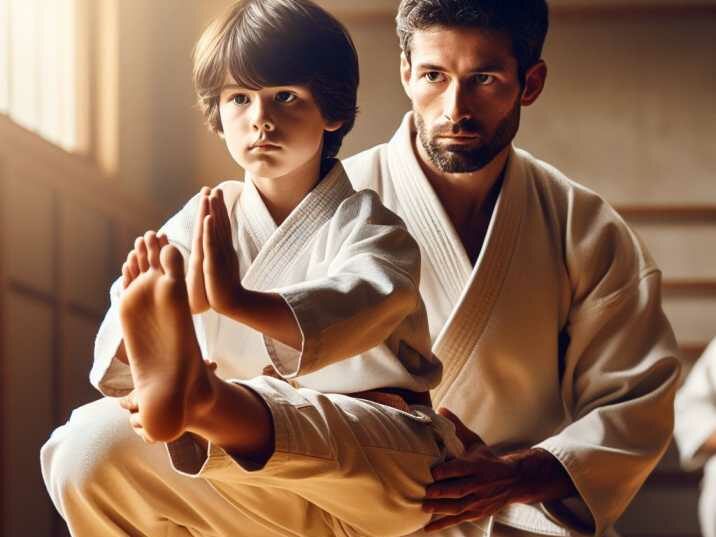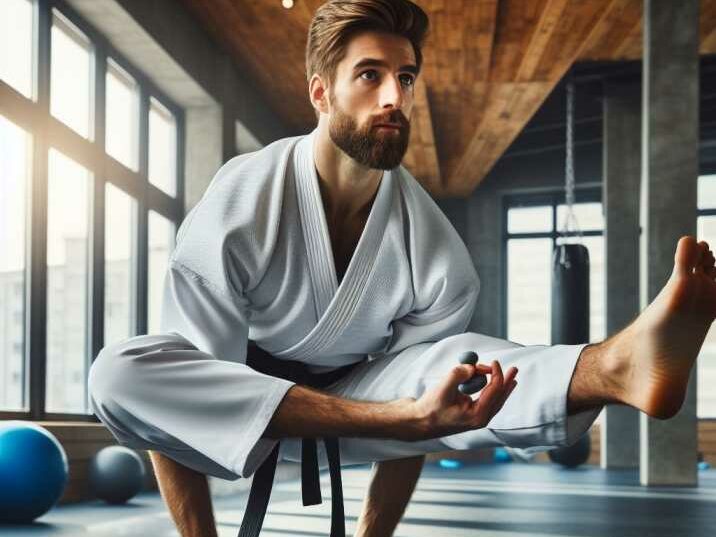Benefits of Balance Exercises
Table of Contents
Introduction:
In the dynamic world of martial arts, where agility, strength, and precision are paramount, balance often plays a crucial role that shouldn’t be underestimated. Whether you are a seasoned martial artist or just starting on your journey, incorporating balance exercises into your training routine can significantly enhance your skills and overall performance. Let’s explore the myriad incorporating benefits of balance exercises into martial arts training, unraveling the secrets to unlocking your full potential.
In the fast-paced realm of martial arts, achieving and maintaining balance is a foundational element that sets the stage for success. The benefits of incorporating balance exercises into your martial arts training are unparalleled. From improving overall stability to honing specific techniques, these exercises are a game-changer.
The Foundation of Stability
Before delving into the benefits of balance exercises, let’s understand the foundation of stability that balance exercises provide. Just as a solid structure requires a stable foundation, a martial artist needs a strong base to execute techniques effectively. Balance exercises contribute to this foundation, ensuring that every move is executed with precision.

Enhancing Agility and Reflexes
One of the primary advantages of the benefits of balance exercises into martial arts training is the significant improvement in agility and reflexes. These exercises challenge your body to adapt quickly to different positions, mimicking the unpredictable nature of combat situations. This adaptability translates directly into enhanced agility and faster reflex responses.
Precision in Technique
Martial arts are not just about strength and speed; precision in technique is equally crucial. Balance exercises fine-tune your control over body movements, allowing you to execute techniques with unparalleled precision. Whether it’s a high kick or a swift block, a balanced foundation ensures accuracy in every move.
Strengthening Core Muscles
Balance exercises predominantly engage the core muscles, which serve as the powerhouse for martial artists. A strong core not only enhances balance but also contributes to improved overall strength. From punches to kicks, a well-conditioned core ensures that your strikes pack a powerful punch.
Injury Prevention and Rehabilitation
In the world of martial arts, injuries are an unfortunate reality. However, incorporating benefits of balance exercises into your training routine can serve as a preventive measure. Additionally, these exercises aid in rehabilitation after injuries by promoting a gradual and controlled recovery.
Mental Focus and Concentration
Beyond the physical benefits, balance exercises also play a crucial role in enhancing mental focus and concentration. As you navigate through intricate poses and movements, your mind becomes attuned to the present moment, fostering a heightened level of awareness that is invaluable in martial arts.

Holistic Approach to Training
Martial arts are not just a physical endeavor; they encompass a holistic approach that integrates the mind, body, and spirit. Incorporating balance exercises aligns perfectly with this philosophy, providing a well-rounded training experience that goes beyond mere physical conditioning.
Adaptability in Various Martial Arts Styles
Whether you practice karate, taekwondo, judo, or any other martial art, balance exercises are versatile and can be tailored to suit the specific requirements of different styles. This adaptability makes them a valuable addition to any martial artist’s training regimen.
Fun and Varied Training Sessions
Monotony in training can be a motivation killer. Balance exercises inject an element of fun and variety into your sessions, keeping you engaged and enthusiastic about your martial arts journey. From balancing on one leg to intricate movements, these exercises add a playful dimension to your training.
Practical Incorporation into Training Routines
Now that we’ve explored the benefits of balance exercises, let’s discuss how you can practically incorporate balance exercises into your existing training routine. It’s essential to strike a balance (pun intended) and seamlessly integrate these exercises without overwhelming your routine.

Recommended Balance Exercises
- Single-Leg Stance: Stand on one leg for 30 seconds, gradually increasing the duration as you build stability.
- Balance Board Drills: Utilize a balance board for dynamic movements, mimicking the unpredictability of real-life scenarios.
- Yoga Poses: Poses such as tree pose and warrior III not only improve balance but also enhance flexibility.
- Martial Arts-Specific Drills: Craft drills that focus on balance, incorporating techniques relevant to your martial arts style.
The Importance of Regular Practice
Consistency is key when it comes to reaping the benefits of balance exercises. Aim to include these exercises in your training routine at least two to three times a week for optimal results. Gradually increase the intensity and complexity as your skills and stability improve.
Conclusion:
Incorporating benefits of balance exercises into your martial arts training is a transformative journey that yields numerous benefits, both physical and mental. From enhancing stability and agility to preventing injuries and fostering a holistic approach to training, these exercises are a valuable asset for martial artists of all levels. Embrace the challenge, enjoy the process, and unlock the full potential of your martial arts journey through the power of balance.
Frequently Asked Questions (FAQs)
1. How often should I incorporate balance exercises into my martial arts training routine?
Answer: Ideally, aim to include balance exercises in your training routine two to three times a week. Consistent practice will gradually enhance your stability and overall performance.
2. Can balance exercises help prevent injuries in martial arts?
Answer: Yes, incorporating balance exercises into your training routine can act as a preventive measure against injuries. These exercises improve body control and stability, reducing the risk of injuries during martial arts practice.
3. Are balance exercises suitable for all martial arts styles?
Answer: Absolutely. Balance exercises are versatile and can be adapted to suit various martial arts styles, including karate, taekwondo, judo, and more. The key is to tailor the exercises to align with the specific requirements of your chosen style.
4. How long should I perform single-leg stances during balance exercises?
Answer: Start with 30 seconds and gradually increase the duration as you build stability. The goal is to challenge yourself without compromising form. Adjust the time based on your comfort level and progress.
5. Can balance exercises be integrated into martial arts-specific drills?
Answer: Yes, designing martial arts-specific drills that focus on balance is an excellent way to incorporate these exercises. This ensures that your training remains relevant to your martial arts style while reaping the benefits of improved stability.
6. Will balance exercises make my training sessions more enjoyable?
Answer: Yes, absolutely. Balance exercises add a playful and varied dimension to your training sessions, making them more enjoyable and engaging. The challenge of mastering new movements and poses adds excitement to your martial arts journey.
7. Can balance exercises be performed at home, or do I need special equipment?
Answer: Many balance exercises can be performed at home with little to no equipment. Simple drills like single-leg stances and yoga poses require minimal space and can be easily incorporated into your daily routine. However, using tools like a balance board can add variety to your exercises.
8. How do balance exercises contribute to a holistic approach in martial arts training?
Answer: Balance exercises engage not only the physical aspects of training but also contribute to mental focus and concentration. By aligning with the holistic philosophy of martial arts, these exercises promote a well-rounded training experience that encompasses the mind, body, and spirit.


